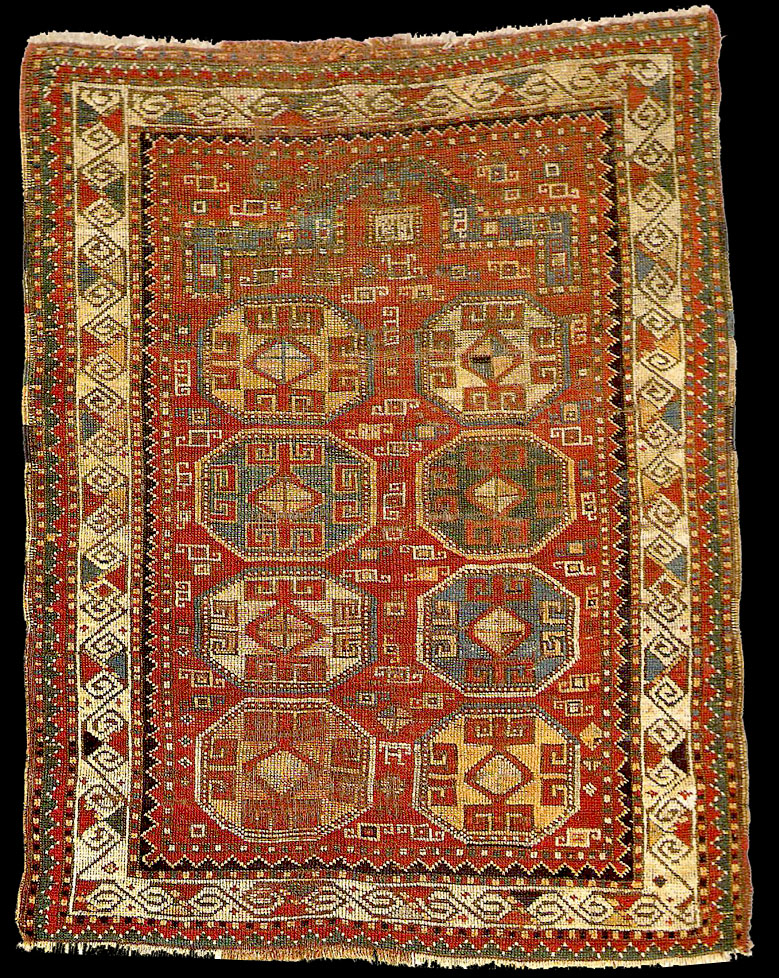|
Turkoman ancestry is evident in this highly unusual Kazak prayer rug, which
was purchased by the owner's grandfather as an old rug in about 1900.
(Turkish-speaking tribes, particularly Yomut and dated ah 1253 (1837) Chodor,
often use octagons in a similar manner in their rugs.) While no analogous
Kazak examples are known, similar octagons appear on a group of finely woven
prayer rugs assigned to Moghan or Shirvan1, as well as on a Baku
rug2.
www.azerbaijanrugs.com/guide/moghan/antique_caucasian_moghan_rug92.htm
www.azerbaijanrugs.com/guide/moghan/antique_caucasian_moghan_rug87.htm
www.azerbaijanrugs.com/guide/moghan/antique_caucasian_moghan_rug80.htm
www.azerbaijanrugs.com/guide/moghan/antique_caucasian_moghan_rug82.htm
The sides of the prayer arch extend vertically into the field. This feature,
while unusual, is known on a number of rugs of various types. The palette
comprises the red, white and blue colours typical of southwestern examples,
but green and yellow are also used sparingly and the red has a blueish
tinge, tending to maroon.
Although classified as a Kazak, based on structural criteria, the rug has
some Genje characteristics. The border, while identical to some Kazak
examples, is typical of Genje pieces3, while the geometric "s"
forms that dot the field, and the economical use of yellow, green and brown,
are also Genje characteristics. The date is difficult to read but can be
deciphered as ah 1253, translating to 1837, which, considering the rug's
provenance and appearance, is credible.
Technical Analysis:
Warp: white and brown wool, sometimes plied together, Z3S
Weft: red and shades of brown wool, sometimes plied together, Z2S, 2 or 3
shoots
Ends: missing
Sides: 3 cords overcast with a variety of coloured wool
Lit:
Ralph Kaffel's Caucasian Prayer Rugs plate 16
1 Assigned to Moghan: see
pl. 37, Lefevre 1 Oct. 1982, lot 29 = Hali Decorative: A Buyer's Guide
to the best of Decorative Carpets (London 1988), p. 36. Assigned to Shirvan:
see Georg Butterweck et al., Austrian Collections, pl 66; Skinner 1 June
1991, lot 172 = Hermann, ATT 4, pl.49; Sotheby's NY 9 March 1994 , lot 3.
2 Hubel, the Book of Carpets, pl. 57 (octagons with Memling
Guls)
3 For a Kazak sample see Hubel, The Book of Carpets, pl. 36 =
Rippon Boswell 16 Nov. 1991, lot 155. For Gendje, see Hawley, Oriental Rugs:
Antique and Modern, pl. 50
 |

